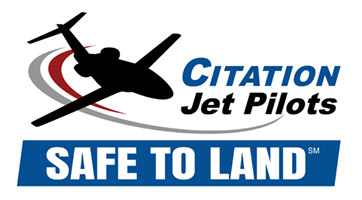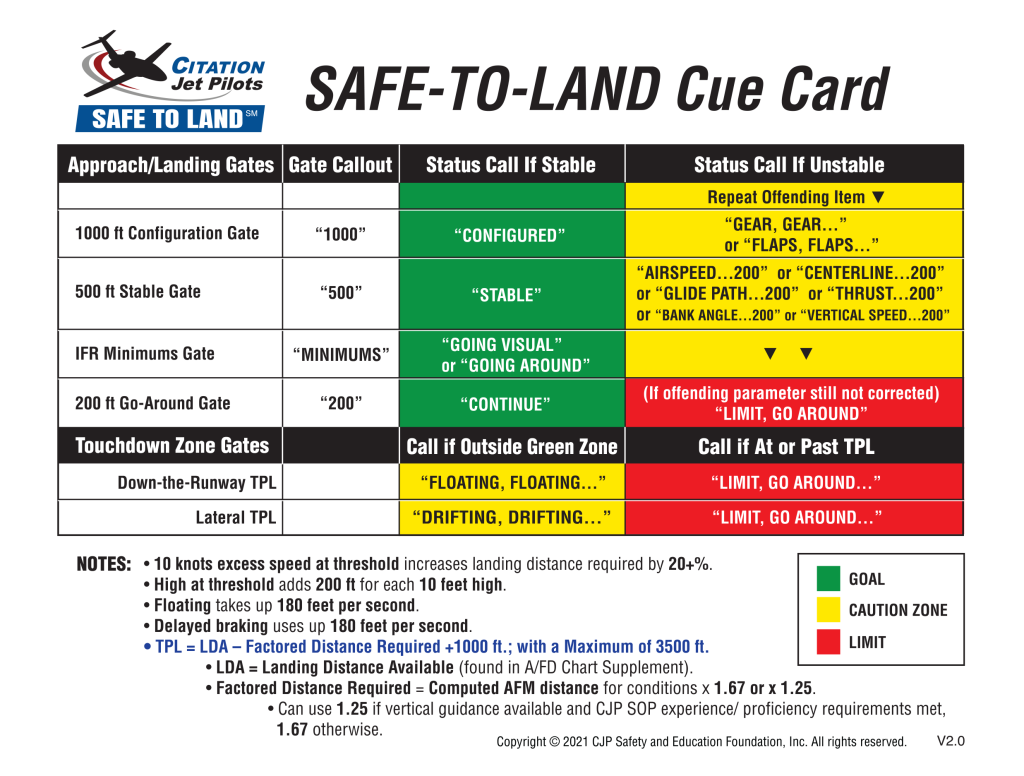Introduced two years ago, CJP’s Safe to Land(sm) initiative is recognized throughout the industry for its data-driven methodology toward flying stabilized approaches to landing. That doesn’t mean there wasn’t room for improvement, however – or, more accurately, evolution.

At CJP 2023, Safety Committee Chairman Charlie Precourt was joined by Master CFI Neil Singer to present a refresher on the current program before delving into what they dubbed ‘Safe to Land(sm) 2.0,’ adding STL criteria for non-straight-in approaches, along with visual approach cues and traffic pattern standards, guidance on the use of avionics on visual approaches and proper use of go-around gates at various points on approach.
For example, Precourt noted the STL additional gate at 200′ AGL – which provides a “yellow zone,” a limited time to fix an unstable situation below 500′ AGL – may be particularly useful on visual approaches, or when ATC keeps you at a higher-than-ideal speed before the final approach fix.
“The idea here is to build in what pilots have in their own brain, which is ‘I know I haven’t quite made it yet, but I can fix this,’” he added. “[That may be true] to a point because they can’t fix it if the instability is too large. So, we all agreed that this (200-foot gate) arrived in a better place for us to make the go around decision.”
Singer noted the gate at 500′ AGL may not provide a realistic point at which to break off an approach if the pilot is only off slightly from the defined STL criteria.
“If we’re being truthful, I think most of us have had the experience of shooting to be REF +10 at 500 feet, but we were actually REF +15, yet we still affected a safe landing,” Singer added. “I certainly have, so when we used that criteria, we were setting pilots up to ignore it. We’re trying to align the guidance with what our focus group members told us, so this resonates across our community.”

Neil and Charlie also offered guidance on determining your touchdown point limit (TPL) and setting visual reference points through the windscreen to call a go around if you’re floating and not down and braking before the TPL.
“It’s important to emphasize you can meet all the goals on the approach, but you still need to land the airplane,” Singer added. “The industry has talked about stable approaches for a long time, and we’re continuing that conversation all the way until the wheels are on the ground.”
More information about Safe to Land(sm) is available here.